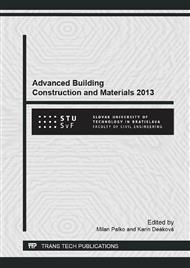p.85
p.89
p.93
p.97
p.102
p.108
p.112
p.116
p.120
Program for Quantification Temperature and Aerodynamic Mode of Double-Skin Facade
Abstract:
Program functional diagram. Dimensional and physical quantification of individual parts of double-skin facade. Reference year for Bratislava. Direct normal solar radiation, diffuse solar radiation and its transformation to required surface. Mass flow rate designation by intermediate space of double-skin facade by means of iteration method. Mode of double transparent facades from natural convection for day or night. Mode at wind effect. Conditions for designation of algorithm suitability for specific moment.
Info:
Periodical:
Pages:
102-107
Citation:
Online since:
December 2013
Authors:
Keywords:
Price:
Сopyright:
© 2014 Trans Tech Publications Ltd. All Rights Reserved
Share:
Citation:


